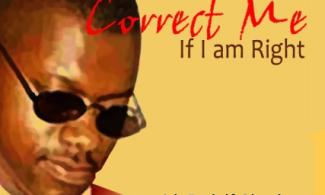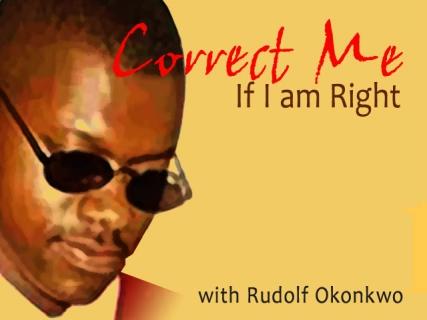
Part I of Rudolf Ogoo Okonkwo's piece on quantum theory and politics.
I missed my flight from London to New York City. Trouble started at Murtala Muhammed International Airport in Lagos when our plane developed a sensor problem while taxiing for take off. It forced the plane to return to the gate for engineers to work at it. After enduring power outage at the airport, I was ready for anything.
When I was rebooked onto another flight in London, I was given a seat next to two men. One was a professor of solid-state engineering at Oxford University. The other was a retired professor of Theology at Cambridge University. They were going to America for conferences. I engaged them in conversations about life and philosophy, politics and economy, aliens and science, Zika and Zuma. It lasted for hours.
It would have continued for the duration of the flight had I not asked them a question about the black race and the performance of black countries across the world. I tied the question to that controversial bell curve theory and whether there is racial difference in intelligence. It was not a trick question. At that point in our conversation, they had known a lot about me and about Nigeria. We had talked about Buhari, Biafra and about the role of Britain in the tragedies of Nigeria. They were genuinely surprised that the Buhari government had not worked out well for Nigerians.
We had talked about the Chinese in Africa, Muslims in Europe, about Brexit, about Donald Trump in the White House, Boko Haram in Borno and about female pastors in Anglican church (The Cambridge man’s wife is an Anglican priest. She was sitting at the other end of the row, listening) At this point in our conversation, they had taken a glance at my book, “This American Life Sef.” The Cambridge man had read the poem that started the book and had been fascinated by the last four lines and what they meant to him.
Yet, the question about the fate of the black race tackled them down. The color of their faces changed. They gave vague and nervous answers. They blamed slavery, colonization and world economic structure for why black nations are still impoverished across the world. The Oxford man recommended a book on how the wealth of the world is shared. The Cambridge man acknowledged all the brilliant black people he had worked with world over and his visits to Africa but fell short of offering an explanation other than blaming the West for the state of things from South Africa to Abuja to Cairo to Mogadishu to Port-au-Prince.
After the question and the tortuous answer that followed it was natural that we took a break. I used the time to adjust the pear in my carryon bag and to read the first chapter of Ruth E. Kastner’s book, “Understanding Our Unseen Reality.”
At one point in the 18th century, Kastner wrote, that classical physics almost got everything right. It captured the atom and presented it as “the basic building block of matter.” The atom mirrored the solar system with the sun as the nucleus and the planets as the electrons orbiting the nucleus. But then, scientists discovered that the electrons have unstable orbits. They were supposed to lose energy and move in diminishing circles until they collapsed into the nucleus. That again did not happen. Objects in space often emit lights that classical theory could not explain. While the classical physics light model worked with unheated objects, it failed when some matter are heated and they emit ultraviolent radiation and some even emit X-rays. This forced physicists to go back to the drawing board to search for a new solution. What they came up with was quantum theory.
The new theory did so many good things. It brought atom and light together in a way that made sense. It also explained why electrons in atoms do not continuously lose energy until they collapse into the nucleus. Unfortunately, the new theory couldn’t fit the atom into the solar system model. What scientists did at this point was to use a mathematical equation to represent the unknown. If you use the formula, you will get the right answer. But the atom seemed to have vanished in a smoke that is often referred to as the quantum smoke. That vanishing act of the atom led to a new debate. What was the smoke? Erwin Schrodinger who was one of the founders of the new theory could only say that the smoke was a useful mathematical equation.
Other scientists like Niels Bohr and Albert Einstein had vigorous debate about the smoke. Bohr said people should not ask questions about what the reality was for real. He said they should just use Schrodinger’s suggestion that it was a “wave function”. Just use it and you will get the result that fits well into what we can observe, he proposed. Einstein’s picture of what could be underneath the “smoke” was easily proven to be unworkable by Bohr. On his own, Bohr had no answer other than to say that we should not ask the question.
Quantum theory is still a concept without a conceptual mirror needed for us to observe it. Unlike other revolutions in science (earth is flat and earth is the center of the universe), Kastner argues that we cannot make a conceptual leap needed to understand quantum theory until we disregard the immediate evidence of our senses to reach the truth.
(… to be continued in Part 2)
